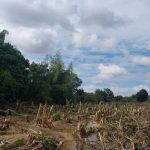The rainy season in the northern region of Peru especially in Tumbes and in the highlands of Piura and Piura, has raised concerns within the agricultural sector. However, the production of bananas within Piura region Piura zone, which is about 80 to 85 percent of total national production and isn’t significantly affected to date.
According to reports from the local press according to local reports, rain in Piura has been observed mainly in highland regions that have experienced loss of crops due to the intense nature of the rainfall. However, on the coastline in the area where most mangoes and bananas that are intended to be exported are grown rains have been intermittent and not too intense.
Even though climatological indicators point toward an increased rain in March, there’s some uncertainty regarding the extent of the effect on farming in the area. However to Tumbes located closer to the equator’s line, the rains are more intense leading to crop loss and destruction to roads.
It’s important to note that Piura region was hit by a prolonged drought from October to December of last year. This resulted in the plantations to experience a stress hydric due to a decrease in the water reserve. This has improved following the recording of some rains but there’s not any need to worry for agriculture farmers on the coast.
The sector of agroexport keeps an monitoring the weather since any shift in precipitation could have an impact on the logistics for exports and production of the most important agricultural products within the region.
